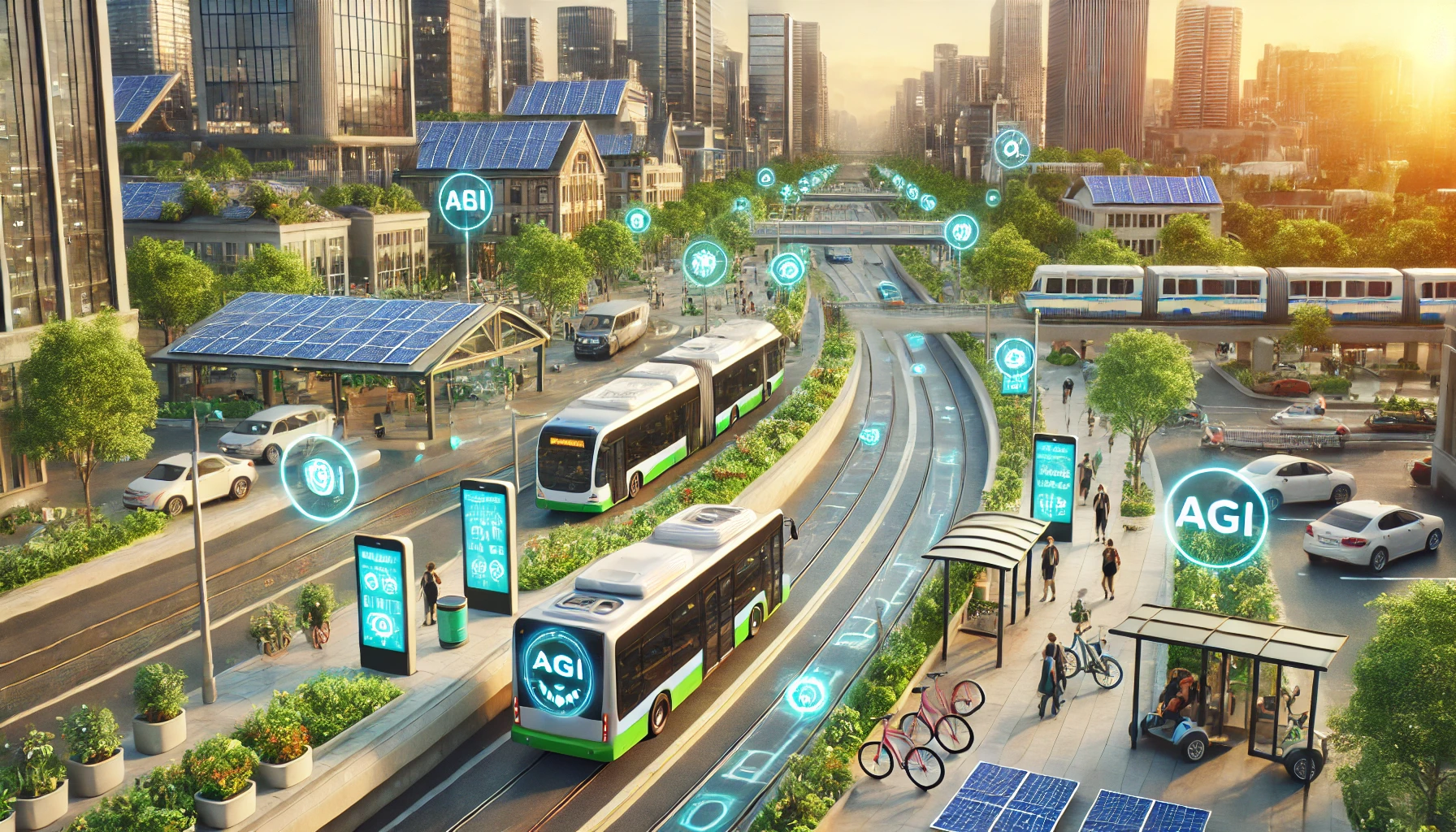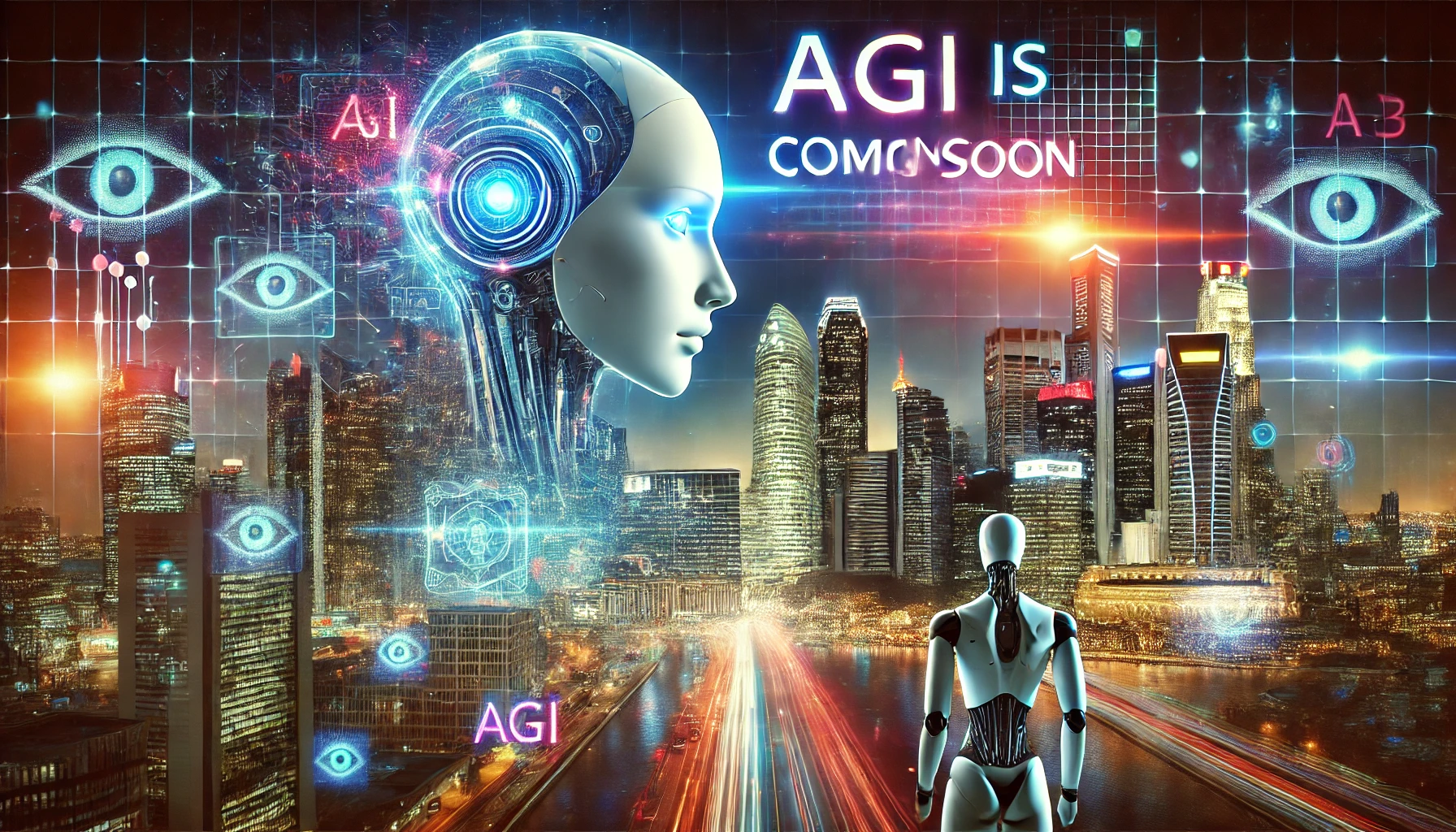Public transport systems are crucial for urban development, environmental sustainability, and social inclusion. However, challenges such as affordability, inefficiency, and high emissions hinder their full potential. Artificial General Intelligence (AGI) has the transformative potential to address these issues, creating more affordable and sustainable public transportation systems.
1. Optimizing Routes and Schedules
AGI can analyze real-time and historical data to optimize routes and schedules dynamically. By predicting passenger demand, AGI ensures that buses, trains, and other modes of transport run only when and where needed, reducing fuel consumption, costs, and idle times.
2. Enhancing Energy Efficiency
Sustainable energy use is central to reducing the carbon footprint of public transport. AGI can facilitate the transition to electric or hybrid fleets by analyzing energy consumption patterns, optimizing charging schedules, and ensuring minimal downtime for vehicles.
3. Dynamic Pricing Models
AGI-powered systems can introduce adaptive pricing models, adjusting fares based on demand, time of day, or specific user needs. This ensures affordability for all socio-economic groups while maintaining profitability for operators.
4. Real-Time Traffic Management
Congestion and delays often plague public transport. AGI can integrate data from IoT devices, cameras, and sensors to monitor traffic in real-time. It can suggest alternative routes or adjust transport schedules to minimize disruptions and ensure timely services.
5. Personalized Commuting Experiences
AGI can analyze commuter preferences to create tailored services, such as recommending the fastest route, ensuring accessibility for differently-abled individuals, or integrating first- and last-mile connectivity through bike or ride-sharing options.
6. Predictive Maintenance
Breakdowns and delays significantly impact public transport reliability. AGI can predict maintenance needs by analyzing vehicle performance data, reducing unexpected failures and lowering operational costs.
7. Encouraging Behavioral Change
AGI-powered apps can nudge users toward sustainable travel choices by showcasing the environmental benefits of public transport over private vehicles. Gamification, incentives, and real-time environmental impact updates can encourage adoption.
8. Urban Planning Integration
AGI can assist city planners in designing infrastructure that supports efficient public transport. By simulating urban growth patterns, AGI can recommend optimal locations for bus stops, train stations, or dedicated transport lanes.
9. Reducing Emissions with AI-Driven Policies
AGI can support policymakers by modeling the impact of environmental policies, such as low-emission zones or subsidies for green public transport, ensuring that they are both effective and economically feasible.
10. Inclusive Transport Solutions
AGI can ensure public transport caters to everyone, including marginalized communities. It can identify underserved areas, propose targeted services, and suggest policy changes to improve accessibility and affordability.
The Road Ahead
The integration of AGI into public transport systems has the potential to revolutionize urban mobility, making it not only affordable but also sustainable. However, ethical considerations such as data privacy, bias in decision-making, and equitable access must be addressed to ensure these technologies benefit all.
By embracing AGI, cities worldwide can move closer to a future where public transport is a preferred, eco-friendly, and cost-effective option for everyone.
[SEO optimized]


